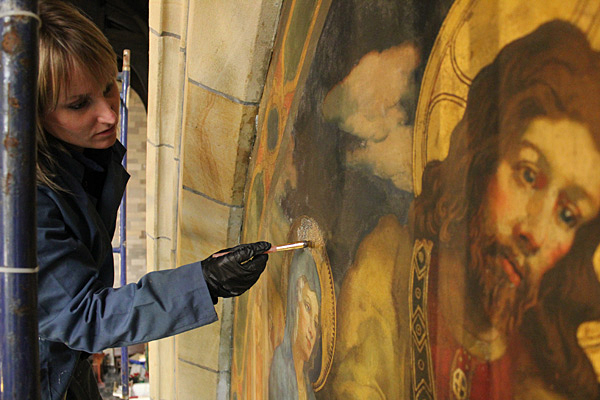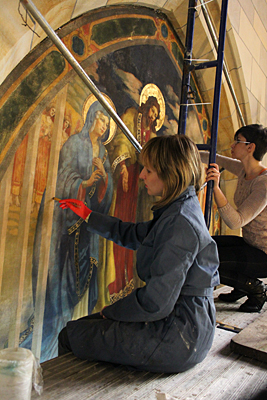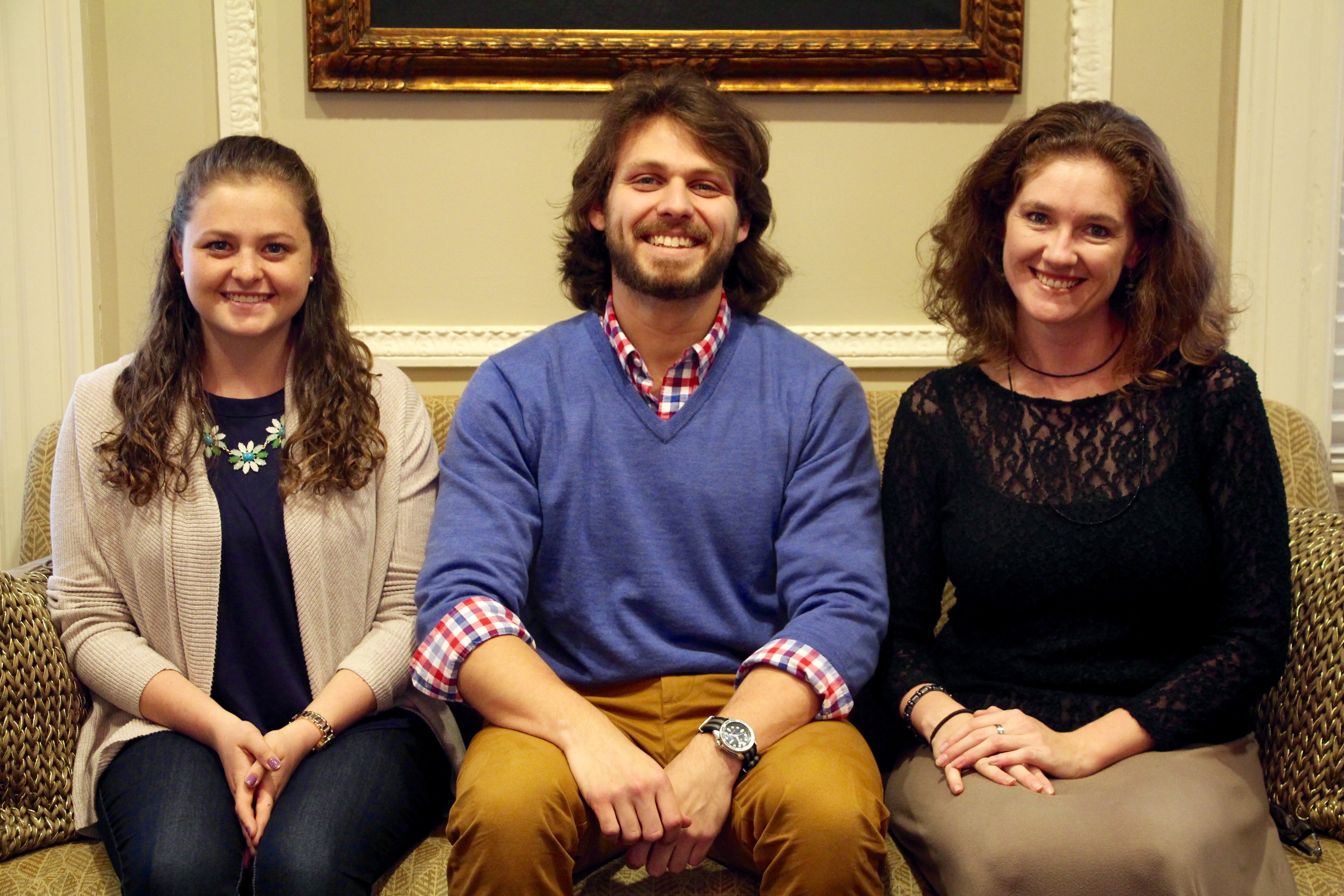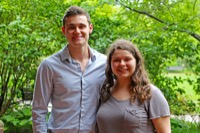


Netherlands connection
University of Amsterdam student interns with UD conservator
4:16 p.m., Jan. 25, 2012--The University of Amsterdam’s Willianne van der Sar is interning at the University of Delaware with one of her idols in the art conservation world: Richard Wolbers.
Global Stories
Fulbright awards
Peace Corps plans
An associate professor and coordinator of science in the UD Department of Art Conservation and adjunct paintings conservator at Winterthur Museum, Wolbers is renowned for the innovative techniques and materials he has developed for cleaning and restoring objects ranging from Van Gogh paintings to the U.S. Capitol building.
Van der Sar tells UDaily what she is learning on her first trip to Delaware, both about art conservation and the U.S.
Why did you want to come to the University of Delaware to study?
The program at UD is well known, so I was always interested in coming here for an internship. Besides, I wanted to work with Prof. Richard Wolbers because of his expertise and knowledge.
What are you working on with Prof. Wolbers?
Right now, we are working to conserve a wall painting by Taber Sears (1870–1950) in Holy Innocents Roman Catholic Church in Brooklyn, N.Y. The painting has suffered water damage from a roof leak and appears black due to accumulated layers of dirt and soot. Some of these layers are trapped beneath a layer of non-original alkyd varnish, which was applied in the past.
What are you learning, and how will you apply your knowledge when you return home?
I finished my master’s, and now I am in my last year of internship. I am specializing in the conservation of historic interiors, which includes architectural paint research and the conservation of mostly immovable heritage such as wall paintings and wall hangings. To finish my studies, I have to write a thesis about the research and treatment of an object.
Prof. Wolbers developed cleaning materials that can be the perfect solution for different cases, but are not yet fully integrated into everyday practice at private and public conservation studios. I will write my thesis about two case studies concerning the application of two different cleaning gels, each adjusted for that specific artwork in a public building/interior. In theory, I am learning more about the chemistry and the effectiveness of cleaning gels, and in practice, I am learning more about their use, application and tailored preparation. I hope the practical examples of my thesis will lead to more widespread use of these cleaning gels, which would ratify Prof. Wolbers’ philosophy that “every conservator should be able to make his own cleaning agents and thus know what materials are being used” (compared to ready-made commercially available products).
What are some of your impressions of Delaware and the U.S.?
This is my first time in the U.S., and I am enjoying it very much. The students here are very motivated and work hard. Winterthur Museum, where the program is located, is situated in a beautiful landscape. Delaware is small, but centrally located, so it is quite easy to travel to D.C., Philadelphia, New York City and Baltimore -- all places where I have collaborated on conservation projects or which I have visited to hang out with my friends from the program. It has been an unforgettable and educational experience for me.
Are there any other observations you’d like to share?
The Netherlands had a huge influence on American history. In one of the graveyards near where I am working in Brooklyn (Brooklyn is named after the Dutch city Breukelen), you can find a lot of Dutch names.
Many times, Americans ask me if Holland and The Netherlands is one and the same country (Holland is an old name from the past). Or if I tell them I am Dutch, some think I am from Germany. This confusion might come from Pennsylvania “Dutch” country, where the Amish people live. Because the Americans could not pronounce “Deutsch” (German), they made it “Dutch”… but it has nothing to do with Dutch. The Amisch came from Germany....
The food is so much different here than in Europe. The first time I ordered a cappuccino, I could choose between three different types of milk -- everything can be bought low fat or no fat (I had to take care that I did not lose weight, while my Dutch friends were joking I would be fatter when I returned to Holland). So I really miss the food -- the good bread and cheese -- but what I do not miss, the rain. It rains much more in Holland.
What will you do when you return home?
When I return to Holland, I will start a second internship focusing more on architectural paint research -- that means the analysis of paint samples to determine all paint generations and the original finish of an historic interior. Futhermore, I will write my thesis to finish my studies in August.









